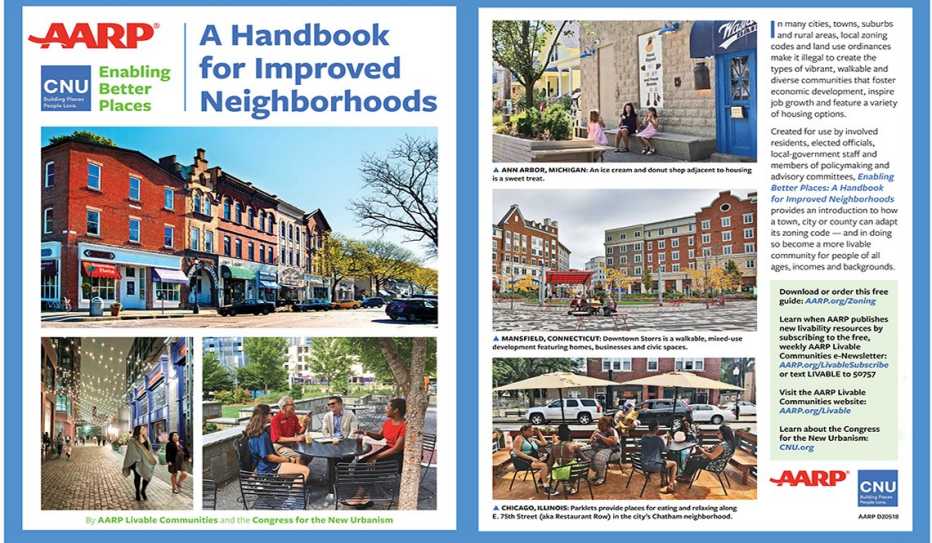AARP Hearing Center


Why are so few cities, towns and neighborhoods in the United States walkable? Why is it so difficult to find vibrant communities where people of all ages, incomes and backgrounds can live, work, shop and play?
Get the Guide
The answer, in many locations, is that zoning codes and land use ordinances have made the creation of such places illegal. In some communities, the lack of walkability, opportunity and livability stems from zoning and development decisions that intentionally separated people by race, faith, ethnicity or income.
Enabling Better Places: A Handbook for Improved Neighborhoods provides options for communities to consider as they identify and select small-scale, incremental policy changes that can be made without overhauling entire zoning codes and land use policies.
There are 42,000 units of local government with zoning authority in the United States. This 24 page free guide explains why a community may want to change its zoning codes and rules, and how it can do so in ways that strengthen the local economy, promote equity, and support diversity and inclusion.
Created by AARP Livable Communities and the Congress for the New Urbanism for use by involved residents, elected officials, local-government staff and members of policymaking and advisory committees, the publication provides an introduction to how a town, city or county can adapt its zoning code — and in doing so become a more livable community for people of all ages, incomes and backgrounds.



























































